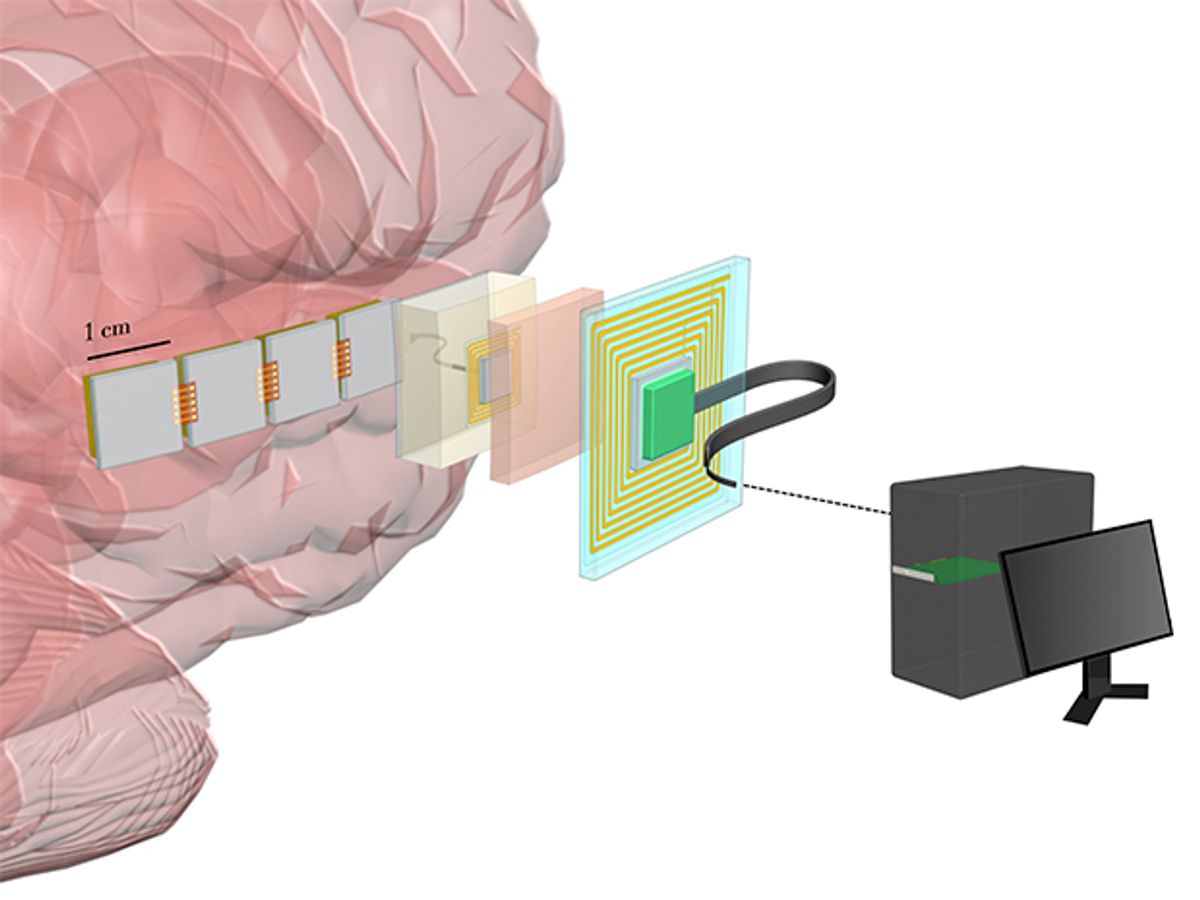DARPA is known for issuing big challenges. Still, the mission statement for its new Neural Engineering Systems Design program is a doozy: Make neural implants that can record high-fidelity signals from 1 million neurons.
Today’s best brain implants, like the experimental system that a paralyzed man used to control a robotic arm, record from just a few hundred neurons. Recording from 1 million neurons would provide a much richer signal that could be used to better control external devices such as wheelchairs, robots, and computer cursors.
What’s more, the DARPA program calls for the tech to be bidirectional; the implants must be able to not only record signals, but also to transmit computer-generated signals to the neurons. That feature would allow for neural prosthetics that provide blind people with visual information or deaf people with auditory info.
Today the agency announced the six research groups that have been awarded grants under the NESD program. In a press release, DARPA says that even the 1-million-neuron goal is just a starting point. “A million neurons represents a miniscule percentage of the 86 billion neurons in the human brain. Its deeper complexities are going to remain a mystery for some time to come,” says Phillip Alvelda, who launched the program in January. “But if we’re successful in delivering rich sensory signals directly to the brain, NESD will lay a broad foundation for new neurological therapies.”
One of the teams taking on the challenge is the Silicon Valley startup Paradromics. Company CEO Matt Angle says his company is developing a device called the Neural Input-Output Bus (NIOB) that will use bundles of microwire electrodes to interface with neurons. With four bundles containing a total of 200,000 microwires, he says, the NIOB could record from or stimulate 1 million neurons.
“Microwire electrodes have been used since the 1950s, but traditionally they’re un-scaleable,” Angle tells IEEE Spectrum in an interview. With existing systems “you need to wire up one microwire to one amplifier—so if you want to use 100,000 microwires, that’s a lot of soldering work for a grad student,” he says.
Paradromics gets around this problem by polishing the end of a microwire bundle to make it very flat, and then bonding the whole bundle to a chip containing an array of CMOS amplifiers. “We make sure the probability of a single wire coming down and touching the pad on the CMOS is very, very high,” says Angle, “but if you have a few spots that don’t get wires, that doesn’t matter much.”
As always, DARPA emphasizes the practical application of technology. By the end of the four-year NESD program, the teams are expected to have working prototypes that can be used in therapies for sensory restoration.
Paradromics’ goal is a speech prosthetic. The NIOB device’s microwires will record signals from the superior temporal gyrus, a brain area involved in audio processing that decodes speech at the level of sound units called phonemes (other areas of the brain deal with higher-level semantics).
The company drew inspiration from neuroscientist Robert Knight at University of California Berkeley, who has shown that when people read aloud or read silently to themselves the neural signal in the superior temporal gyrus can be used to reconstruct the words. This finding suggests that a user could just imagine speaking a phrase, and a neural implant could record the signal and send the information to a speech synthesizer.
While Paradromics has chosen this speech prosthetic as its DARPA-funded goal, its hardware could be used for any number of neural applications. The differences would come from changing the location of the implant and from the software that decodes the signal.
The challenges ahead of Paradromics are significant. Angle imagines a series of implanted chips, each bonded to 50,000 microwires, that send their data to one central transmitter that sits on the surface of the skull, beneath the skin of the scalp. To deal efficiently with all that data, the implanted system will have to do some processing: “You need to make some decisions inside the body about what you want to send out,” Angle says, “because you can’t have it digitizing and transmitting 50 GB per second.” The central transmitter must then wirelessly send data to a receiver patch worn on the scalp, and must also wirelessly receive power from it.
The other five teams that won NESD grants are research groups investigating vision, speech, and the sense of touch. The group from Brown University, led by neural engineer Arto Nurmikko, is working on a speech prosthetic using tens of thousands of independent “neurograins,” each about the size of a grain of table salt. Those grains will interface with individual neurons, and send their data to one electronics patch that will either be worn on the scalp or implanted under the skin.
In an email, Nurmikko writes that his team is working on such challenges as how to implant the neurograins, how to ensure that they’re hermetically sealed and safe, and how to handle the vast amount of data that they’ll generate. And the biggest challenge of all may be networking 10,000 or 100,000 neurograins together to make one coherent telecommunications system that provides meaningful data.
“Even with a hundred thousand such grains, we would still not reach every neuron—and that’s not the point,” Nurmikko writes. “You want to listen to a sufficiently large number of neurons to understand how, say, the auditory cortex computes ‘the Star Spangled Banner’ for us to have a clear perception of both the music and the words.”
Eliza Strickland is a senior editor at IEEE Spectrum, where she covers AI, biomedical engineering, and other topics. She holds a master’s degree in journalism from Columbia University.






